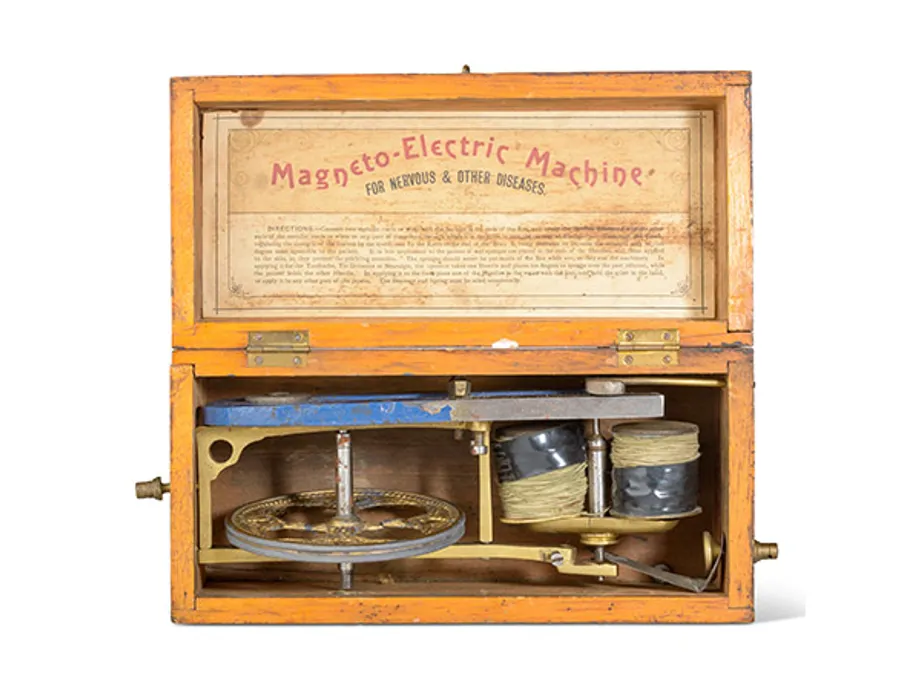Electromagnetic induction
Electromagnetic induction is the production of an electromotive force (EMF) across a conductor when it is exposed to a varying magnetic field.
It is described mathematically by Faradays law of induction, named after Michael Faraday, who is generally credited with the discovery of induction in 1831.
When a permanent magnet is moved relative to a conductor, or vice versa, an electromotive force is created. If the wire is connected through an electrical load, current will flow. And thus electrical energy is generated, converting the mechanical energy of motion to electrical energy.
Magneto-electric machine
This equipment for giving mild electric shocks (unknown manufacturer) was probably produced in Great Britain in the 2nd half of the 19th century. Mild electric shocks were a popular treatment for aches and pains in the 19th century, particularly, those that were associated with nerves.
Electricity was produced by rotating electric wires within the magnetic field of the large magnet. The strength of the electric shock was controlled by how fast the crank was turned. Handles on the ends of the wires (no longer present) would be placed on the patient's body to deliver the shock.

